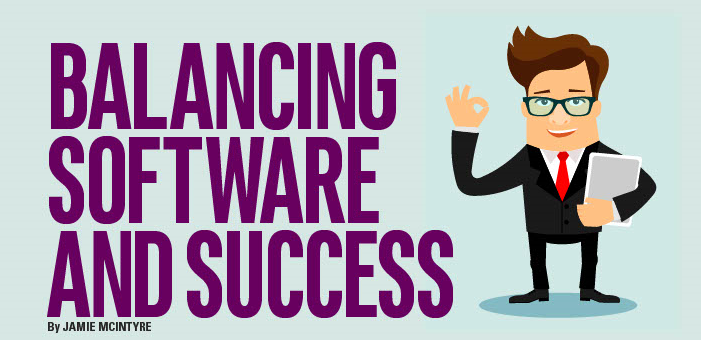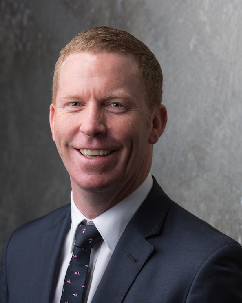
Many advisors are overwhelmed by the sheer amount of technology available to them each day and have tried different applications and devices to streamline their personal life and business. While I personally enjoy and benefit from technology that suits me, I can get frustrated by applications that don’t align with my needs and objectives. As you consider incorporating technology into your practice, think about what provides benefits and what provokes frustration. Reflect on how you can incorporate various tools to balance your life and add value to your client service and business practices.
Customer Relationship Management
Maintaining client relationships is key to your success. Choosing a customer relationship management (CRM) system that suits your style can streamline and enhance your business. While one CRM system may work really well with your operating style, it’s just as possible the system adds unnecessary complexity, hence annoyance. If you currently have a CRM that is frustrating you and your team, explore the many other options on the market until you find what fits your specific needs. Talk to colleagues to see what works for them. In my office for instance, we went through many trials to land on Worksorted [https://www.worksorted.com/].
- Whatever you choose, make sure the CRM works for you rather than pushing you to adapt your business to fit with its capabilities.
- Don’t settle for one that is unsatisfactory when there are so many options out there that may be a better fit for your business.
Forecasting Software
Forecasting tools are also insightful technologies which can help your planning process and create scenario predictions for clients. Million Dollar Round Table (MDRT) [https://www.mdrt.org/technology/] recently conducted a study among U.S. consumers and found that 94% of respondents with a financial advisor found it at least somewhat important that their advisor uses software to model financial outcomes. However, only 48% were confident that, to the best of their knowledge, their advisor actually uses forecasting software. Since consumers have strong opinions in favor of forecasting software, if you are using one, make sure you actively communicate that or consider purchasing a tool to meet your clients’ needs.
For example, the XPLAN IRESS platform has a tool called CALM, which produces the forecasting that opens clients’ eyes to their financial future. While a full XPLAN license that includes CRM capabilities may be needed for your business, we found that its full services caused more frustration than the added value. The CALM forecasting tool and a separate CRM system worked best to improve the client experience in my business. Ensure you are not limiting yourselves to just one tool that may or may not fit all of your business needs. A piecemeal solution may be the best way forward to get the specific benefits you need.
Virtual Meeting Capability
Technology can be a valuable tool for conducting online meetings when an in-person meeting is inconvenient or not feasible. With the click of a button, you can hold real-time video meetings with clients, suppliers and licensees. They no longer have to be physically present to meet with you, making reviews and frequent points of contact easier. This function appeals to younger generations who often like to streamline their activities by leveraging technology. Adapting your business to meet the needs of millennials in particular is valuable as they become your next generation of clients. In fact, millennials ages 18-34 are more likely than some of their older counterparts to state it is at least somewhat important for financial advisors to use a platform to host virtual meetings.i
Virtual meetings can improve your internal team functionality, too since meetings can be recorded and reviewed to improve and train future planners and staff members who join later. This can result in less time devoted to training employees for the business owners since new staff will be able to train themselves.
There are a variety of platforms available to expand your virtual meeting capabilities such as Zoom Video which offers screen sharing, HD video and audio, and remote screen control features to streamline processes for staff and external customers.
Cloud-based Financial Technology
One pain point that you may experience is obtaining updated financial information ahead of client reviews. By introducing online tools to your business, clients can connect their bank and financial information using a secure link that feeds all of their information straight into their own personalized webpage. Cloud-based tools, like the Australian platform My Prosperity enable streamlined and enhanced client experience. Through My Prosperity, this financial information is updated daily via direct feeds from their financial institutions. Our clients have responded well to this tool, and it has been a game changer for our business. We transitioned from hounding clients for bank statements and spending time gathering these resources to having all information in one place including uploaded documents like wills. This has brought great efficiency to our business and has given us a major positive change in client experience.
Cloud-based technology is prevalent across many industries and consumers frequently use it in their own personal lives. This can explain clients’ expectations for its implementation in financial planning. Eighty percent of consumers who work with a human financial advisor find it at least somewhat important that their advisor uses cloud technology for storing/accessing client plans.i See how you can add cloud technology to your practice make information more secure and widely available regardless of physical location.
Know Your Value
While robo advisors are being used increasingly among consumers, advisors should rest assured that our services go above and beyond what technology can offer. Consumers recognize this fact and see the value in human advisors. An overwhelming majority (88%) believe technology should complement, not replace, the services of a human financial advisor. We can look to technology to enhance our practices rather than see it as a threat.
Play up your strengths that differentiate you from a robot. Develop mutual trust with your clients and understand the true value of your interactions. For instance, consumers identified top benefits of working with a human advisor as the opportunity to build a trusting relationship (65%), the high level of human interaction (58%) and ease of communication (52%).
While your humanity can go a long way with clients, remember that technology can also help you take your service further. Roughly 7 in 10 Americans (71%) believe financial planning should be managed by a mix of people and technology-based tools. Finding the ideal mix for your business and clients will set you apart from competitors in the digital era.
Continuous Adaptation
While we are currently satisfied with the value added from technology to our business, we continue to try other tools so we can make life easier for staff and clients. If you have not addressed technology recently, consider how your clients and prospects perceive the current state of your practice. Ninety-five percent of consumers want advisors to be tech-savvy regardless of whether or not they currently work with one.i Lean into the digital revolution and through some experimentation, you can really improve your business. Technology will continue to play a role in your success and lead to a balanced personal and professional life. Your journey to success is ongoing and made possible through continuous adaptation as our industry and available tools evolve.

Jamie McIntyre has been a financial planner for over 20 years having joined the industry in 1999. After gaining valuable experience with two local Geelong, Australia, firms, Jamie successfully established MAC Financial in 2009. Jamie has been actively working with all his clients providing valuable advice whilst building a successful financial planning business. He is an 8-year MDRT member. Find him on LinkedIn here: https://www.linkedin.com/in/jamiemcintyre1/
